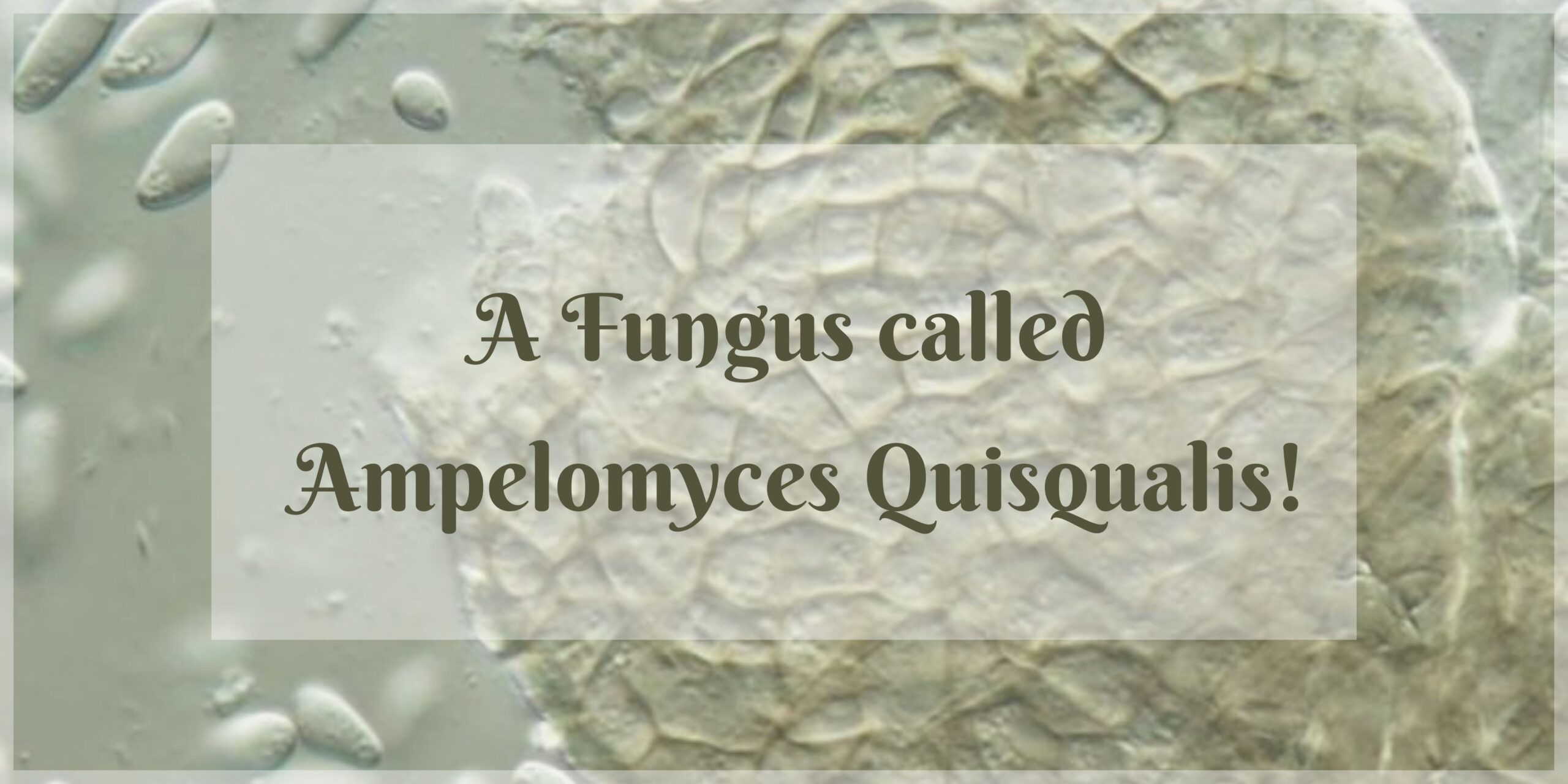
A Fungus called Ampelomyces Quisqualis!
The benefits of Ampelomyces Quisqualis are entirely described in this post. A parasite is a small animal or plant that feeds off or inhabits a larger animal or plant. A parasite that feeds on another parasite is called a hyperparasite. Mildew is a white, living fungus that grows on walls, food, plants, and other surfaces when they are warm and damp.
A fungus is a plant that is not green and doesn’t have leaves or flowers, like a mushroom, or that looks like a wet powder and grows on old wood, food, walls, and so on. Some fungi are beneficial and some are poisonous.
Ampelomyces quisqualis is a fungus that changes shape and is a hyperparasite of powdery mildew. A mycoparasite is a parasitic fungus that lives on another fungus and gets its food from it.
This parasite slows down the growth of mildew and may kill it in the long run. These mycoparasites can live on host plant surfaces for up to 21 days without mildew. When powdery mildew structures appear, they attack them right away. A. quisqualis is what makes a commercial fungicide work.
Facts about Ampelomyces quisqualis
The recommended dosage of Ampelomyces quisqualis is as described below. It is recommended that you use 5 millilitres of the solution for every litre of water when making foliar spray. When applying to the soil, it is recommended that you use between 1.5 and 2 litres of Ampelomyces quisqualis solution per acre.
Treating powdery mildew effectively is one of the benefits of Ampelomyces Quisqualis. It is an excellent way to get rid of powdery mildew, as well as parasitic on Alternaria solani, Botrytis cinerea, Coccodes, Colletotrichum, and Cladosporium cucumerinum.
Ampelomyces quisqualis Conidia has been processed into pellets and powder and named “AQ10.” In the laboratory, these only worked in a limited capacity. They were only moderately successful in reducing the size of existing colonies of the powdery mildew Podosphaera fuliginea, but they successfully reduced the number of new infections.
On the other hand, some greenhouse and field crops have been able to keep diseases under sufficient control. The treatments typically require more than one session to be completed successfully. Raindrops and high humidity both play a role in transmitting the mycoparasite to new mildew colonies.
Advantages of Ampelomyces quisqualis
A harmless and environmentally friendly agro-input, Ampelomyces quisqualis is available at a low cost. Because of its high and perfect bacterial count, it contributes to an improvement in the health of the soil.
Having a longer shelf life is included in the benefits of Ampelomyces Quisqualis. It is a liquid solution that is stronger and lasts longer. It is a suggested part to be successful in organic farming and plantations.
On both young and old cucumber leaves, the powdery mildew caused by Erysiphe cichoracearum can be effectively treated with Ampelomyces quisqualis to the extent of up to 98 percent.
It is applied to cucumbers in order to eradicate Podosphaera fuliginea, which is another common factor in the development of powdery mildew. The crop’s value, however, is reduced because it causes beige angular lesions on the leaves and sunken greenish or tan lesions on the fruit.
Uses of Ampelomyces quisqualis
Ampelomyces quisqualis is a biological fungicide that kills disease-causing pathogens before they can spread to a plant’s roots. It acts as a preventive measure. Ampelomyces quisqualis is responsible for producing a number of enzymes capable of dissolving the host cell wall, penetrating it, and rendering the host’s defence mechanism inactive.
Powdery mildew is a disease that can be prevented with Ampelomyces quisqualis. This disease is caused by pathogens such as leveillula sp., uncinula sp., microsphere sp., oidium sp., Blumeria sp., sphaerotheca sp., and erysiphe sp., among others.
Being a robust solution for many problems in several plants is one of the benefits of Ampelomyces Quisqualis. Ampelomyces quisqualis is a hyperparasite that has substantial effects on a wide range of powdery mildew fungi on all plants. The plants include aromatic crops, medicinal crops, roses, mango, coriander, chillies, cumin, pulses, tomato, peas, grapes, okra, and so on.
Ampelomyces quisqualis is a low-cost bio-fungicide. It is perfect for home gardens, kitchen gardens, terrace gardens, nursery plants, and farming.